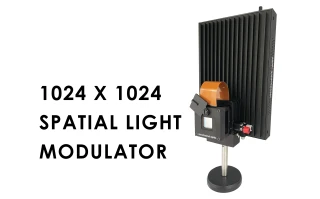Adaptive Optics
Frequently Asked Questions
What is adaptive optics?
Adaptive optics is a technology that is used to correct for distortions in optical systems caused by atmospheric turbulence, lens aberrations, and other factors. It involves the use of deformable mirrors, wavefront sensors, and other components to dynamically adjust the wavefront of a laser or other light source.
What are adaptive optics used for?
Adaptive optics are used in a variety of applications, including astronomy, laser processing, and microscopy. They can be used to improve image resolution, increase laser beam quality, and correct for optical aberrations.
What types of adaptive optics systems are available?
There are several types of adaptive optics systems available, including Shack-Hartmann wavefront sensors, bimorph mirrors, and membrane mirrors. Each type of system is designed for a specific application and offers unique benefits.
What are the benefits of using adaptive optics?
Adaptive optics offer several benefits, including improved image resolution, increased laser beam quality, and the ability to correct for optical aberrations. They are also becoming more affordable and accessible, making them a valuable tool for many industries.
What should I consider when selecting an adaptive optics system?
When selecting an adaptive optics system, it's important to consider factors such as the desired correction speed, the number of actuators in the deformable mirror, and the wavelength range of the system. It's also important to select a system that is compatible with your existing optical setup and meets your specific application requirements.
Which manufacturers offer adaptive optics systems?
There are several manufacturers that offer adaptive optics systems, including Boston Micromachines Corporation, Imagine Optic, Iris AO Inc., and more. Findlight.net provides a comprehensive list of manufacturers and their products to help you find the right adaptive optics system for your application.
Can I get technical support for my adaptive optics system?
Yes, many manufacturers offer technical support and service for their adaptive optics systems. Contact the manufacturer or distributor of your system for more information on technical support options.
Adaptive optics is an advanced technology that allows for real-time correction of optical distortions caused by atmospheric turbulence, lens aberrations, and other factors. By using deformable mirrors, wavefront sensors, and other components, adaptive optics systems can dynamically adjust the wavefront of a laser or other light source, leading to improved image resolution and laser beam quality.



